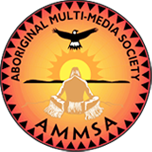Article Origin
Volume
Issue
Year
A new program that uses the traditional sharing circle and involves Elders is aiming to improve the attendance of Edmonton-area Aboriginal students who are truant.
The Aboriginal Attendance Circle program combines restorative justice and a sharing circle model to raise school attendance, lower drop-out rates and encourage high achievement among truant students, according to Charlene Hay, executive director for the Centre for Race and Culture (CRC).
As a part of the program, Aboriginal students with attendance issues work with Elders towards holistic solutions that will enable them to attend school regularly.
“The sharing circle is a traditional Aboriginal practice where every member in the circle has the opportunity to speak,” said Hay. “As a result, we’re able to look towards a solution.”
The involvement of local Elders in the sharing circle also makes the process collaborative and culturally-relevant.
“With the help of Elders, we will assist truant youth to expand their perspective, explore their interests and work towards their goals so that they can find their place in society and build a healthier community,” said Reuben Quinn, program coordinator.
The program is a response to research released in 2004 which indicated that some local parents found that the processes to address truancy were punitive rather than inclusive, said Hay. Prior to the creation of this program, truancy among Aboriginal youth was addressed through the Aboriginal Attendance Board, a provincial body that is intended to help Aboriginal students who have a record of truancy.
According to Alberta Education, when a student who is under 16 years of age fails to attend school as required by law, the school board may ask for a panel of the Attendance Board to address the matter. As a result, the panel may direct the student to attend school, direct parents to send the student to school or impose a fine on parents who do not comply. The panel may give any direction to the student, parent or school that it considers appropriate and enforce that ruling by law.
The CRC is hoping that this program will serve as a more culturally-relevant alternative to the Aboriginal Attendance Board. By working to build collaborative relationships between the Attendance Board, Aboriginal families and children, and Elders, the program is hoping to have a positive impact on the number of truancy problems, low achievement, and high drop-out rates.
The program is unique in that it takes into account the barriers arising from the historical experience of colonization, cultural genocide and residential schools.
“Historically, education has always been critical to Aboriginal people. By encouraging our students to embrace education, we are reclaiming that vital principle,” said Quinn. The program is open to all Aboriginal students, parents, teachers and community members within the Edmonton area.
- 3214 views
